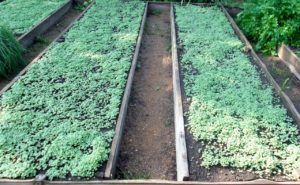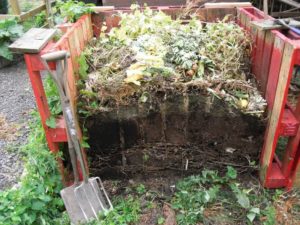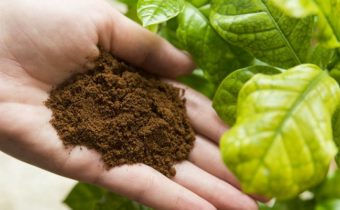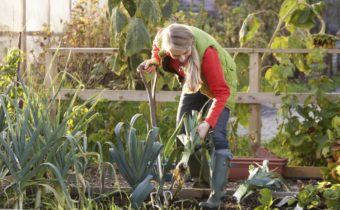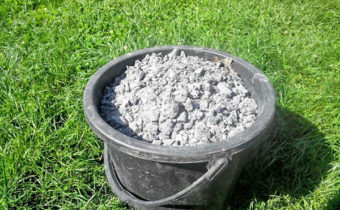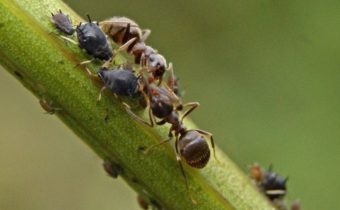We reanimate and heals the soil
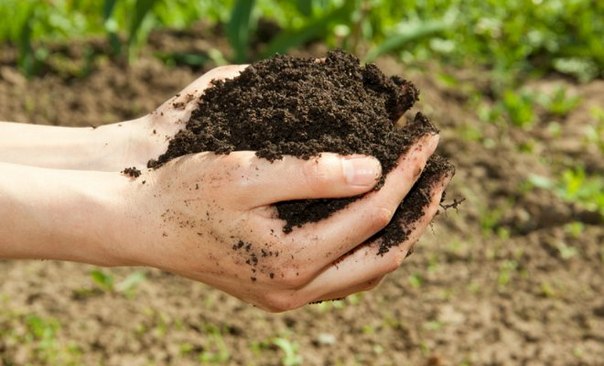
In various climatic zones, gardeners are wondering how to improve and restore the soil at the dacha without the risk of destroying the fertile layer. The key to success will be an early statement of "diagnosis."
The soil loses its properties gradually. Initially, the harvest is reduced, and then - after each watering, a crust covers the soil. A grower who ignores the symptoms described risks killing the soil. After 1-2 years, the soil will become unstructured. To minimize the likelihood of such a development of events will help promptly taken measures.
Determining the cause of the problem
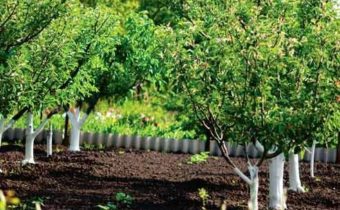 The stage I soil destruction is accompanied by a subtle smell of rot. Over time, mold will be added to it. The first and most obvious cause of the problem is the gardener's actions and inactions:
The stage I soil destruction is accompanied by a subtle smell of rot. Over time, mold will be added to it. The first and most obvious cause of the problem is the gardener's actions and inactions:
- excessive use of chemicals;
- too frequent digging;
- too frequent use of fertilizers;
- wrong choice of humus and so on.
In a separate category there are reasons that are due to the wrong choice of agricultural practices. Gardeners use technologies imposed on them. Botanists recommend first to check how one or another option is compatible with a specific type of soil.
Stage II soil destruction - the result of direct human error. A gardener who digs up the land on a plot turns over small clods of earth. From the side, it seems that there is nothing terrible.
In fact, man destroys good bacteria. After each "coup", they fall deeper into the ground. The less oxygen the bacteria get, the faster they will die. Do not be surprised then that the fertile layer has become smaller. The second problem, which is provoked by human actions, is associated with the destruction of earthworms. The more often the gardener digs up the plot, the more likely it is to chop up all the earthworms. The fewer of them, the, again, the soil feels worse.
Manure should be used in exceptional cases. He is a peddler of infection, not of nutrients. The process of rotting in a heap is the result of human actions. There is nothing like it in nature. Even with a small amount of manure introduced into the soil, its condition worsens.
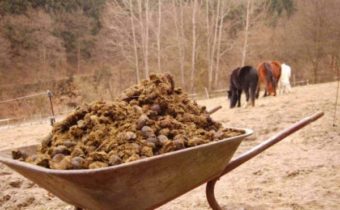 Nature is arranged so that there is nothing superfluous in it. As soon as the collapse of the manure pile has ended, the artificial toxins contained in it are "weathered". After some time, worms will come to the soil, which is saturated with manure. Beneficial bacteria are localized in their bodies. As soon as the bacteria react with manure, the result will not take long. Biologically active "mash", which will end up, can not be classified as "safe." Botanists call the resulting soil humified soil. It cannot be used for agricultural purposes.
Nature is arranged so that there is nothing superfluous in it. As soon as the collapse of the manure pile has ended, the artificial toxins contained in it are "weathered". After some time, worms will come to the soil, which is saturated with manure. Beneficial bacteria are localized in their bodies. As soon as the bacteria react with manure, the result will not take long. Biologically active "mash", which will end up, can not be classified as "safe." Botanists call the resulting soil humified soil. It cannot be used for agricultural purposes.
The rate of "transformation" of the soil after such a reaction can not be called stable. Much depends on the volume of incoming oxygen. As a rule, negative changes are localized in the surface layer. The more dangerous substances in it, the faster it will acquire a dark shade. At the gardener on the site the soil is rich in putrid microbes. For the time being, they are in a “sleeping” state.As soon as the situation becomes favorable, they will “enter” the active phase. A grower who abuses dung risks his own health. Pathogenic flora will penetrate the next harvest.
Autumn preparation of high beds for winter
Autumn is a time when gardeners are engaged in the restoration of land fertility. Everyone has their own approach, but one goal: each ...
In nature, everything is different
Under natural conditions, the process of enzymatic decomposition of organic substances occurs differently. The catalyst is the remnants of leaves and grass. They are compared to natural mulch. As a result, dangerous rotting does not occur. Minimize the risk to their own health and "health" of the soil will help the following recommendations:
- refuse to use manure;
- if you do not succeed, then you need to observe precautions;
- thin layer of manure is laid out on the site so as not to hurt the root system of greenery;
- raspberry and currant are less susceptible to the negative sides of the manure;
- for several days, decomposed manure undergoes enzymatic decomposition - a process that will be catalyzed by the microflora contained in the soil;
- if the gardener refrains from applying chemicals, then he will have safe and high-quality humic fertilizer on the plot.
Organic mulch is a safe alternative to manure. The choice here is not limited. The only caveat is to use "thick" layers. The recommended thickness is 4-5 cm and more. As a result, the gardener will get a good harvest without the risk of developing pathogenic flora.
It is forbidden to store manure in a large pile. In any weather, it will become a huge biohazard bomb.
Choosing the right mulch
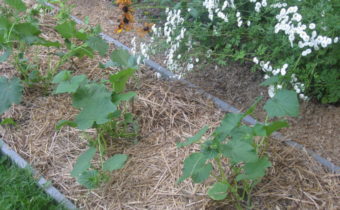 Bet on materials of organic origin. The following options are popular:
Bet on materials of organic origin. The following options are popular:
- husk;
- husk;
- chaff;
- leaves;
- sawdust;
- grass.
The easiest way to find sawdust, which are inexpensive. Skeptics will say that most of the above options will lead to an increase in soil acidity. In fact, it all depends on the method of application. Mulch is placed on the surface of the soil, and not buried. The second nuance - the oxidation process is triggered by their mushrooms. They are contained in the soil. It can be said that oxidation is a natural process.
Immediately after the introduction of sawdust or other mulch, worms and microbes will begin the “meal”. Biologists have determined that the listed gardener assistants do not care what to eat. The only "but" - the end product of the activity of microbes and worms will be dangerous or safe substances. The result depends on the choice of gardener. Botanists recommend making a choice in favor of processes that occur in natural conditions.
Wrong compost, typical mistakes
To get strong bushes of tomatoes and a rich harvest, it is advised to use compost. This is a natural fertilizer, ...
Practical advice to gardeners
After analyzing the main reasons that undermine the health of the soil, you can proceed to find ways to solve the problem:
- it is desirable to keep the garden under “tinning” - it is enough to mow everything once in six months what grows there in order to get high-quality soil;
- weed grass is removed no more than 1 time every 8 months;
- representatives of cereals and clover are mowing without regard for dates;
- the grass that mowed, left on the site - it will serve as a nutritious diet for beneficial bacteria and worms;
- up to 4 small pieces of land are left on the plot, on which plants useful for the gardener are located - over time they will spread the seeds in the adjacent territory, which will improve the condition of the soil;
- beds of some crops are limited by boards or slate from beds with other cultures - simple advice minimizes the likelihood of stepping on one part of plantings while processing another.
The space between the rows sprinkled with a 5-cm layer of sand or sawdust - to move around the garden will become easier.
Proper soil care
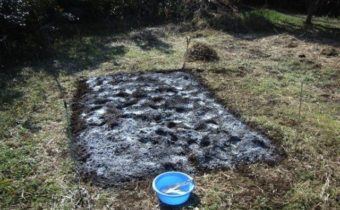 Gardeners who have excessively loamy soil at the site contribute biocompost. The recommended dosage is 1 kg for every 1m2. Prepare it as follows:
Gardeners who have excessively loamy soil at the site contribute biocompost. The recommended dosage is 1 kg for every 1m2. Prepare it as follows:
- choose a plot of the garden, which is located in the shade;
- a biofactory is formed here;
- mix any organic matter with loamy earth in a ratio of 2 to 1;
- 500 ml of water are added to the mixture;
- make up to 30 worms - choose manure and rain;
- pile covered with thick oilcloth.
The gardener's task is to support the activity of the biological factory. It's about adding earth and organic matter. It is made only on the side, not on top. As a result, the worms and beneficial bacteria will be comfortable throughout the year.
When vegetables are grown
Active vegetation often leads to accelerated drying out of the soil. A few practical tips will help slow down the process:
- a thick layer of sawdust is poured between rows — simple manipulation that will eliminate the need for frequent watering;
- several dozen earthworms and meadow land are gathered in the forest;
- bring them to the site and lay out evenly on the site where there is a layer of mulch;
- a few hours later, the natural helpers of the gardener will populate the plot.
Further work will take on the beneficial bacteria and worms. The gardener's task is not to interfere with them. After 1-2 months, no traces of pathogenic microorganisms will remain on the site. The nature of the way to solve many problems on your own. The key to success will be a healthy soil microflora.
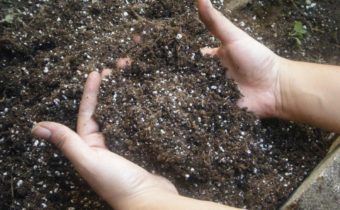 Gardeners who thoughtlessly use agricultural machinery, risk to destroy the fertile layer. Excessive fertilization and digging, improper watering, the use of pesticides is a small part of the factors that lead to sad consequences. Attention to detail will help to prevent the development of irreversible changes. As soon as the gardener senses the smell of rot or has seen traces of mold, you need to take action immediately.
Gardeners who thoughtlessly use agricultural machinery, risk to destroy the fertile layer. Excessive fertilization and digging, improper watering, the use of pesticides is a small part of the factors that lead to sad consequences. Attention to detail will help to prevent the development of irreversible changes. As soon as the gardener senses the smell of rot or has seen traces of mold, you need to take action immediately.
It is worth starting with the substances used. Humus - a source of problems for green spaces and living things. It contains an excessive number of pathogens of deadly ailments. The second rule - rely on good bacteria and worms. Natural gardener assistants will quickly solve many problems without risking a person. When choosing a worm, preference is given to local populations. Imported worms are less effective in restoring soil health. The third rule concerns the use of manure, which is alien to nature. Instead of the aforementioned source of "contagion", preference is given to a safe fermentation process.

